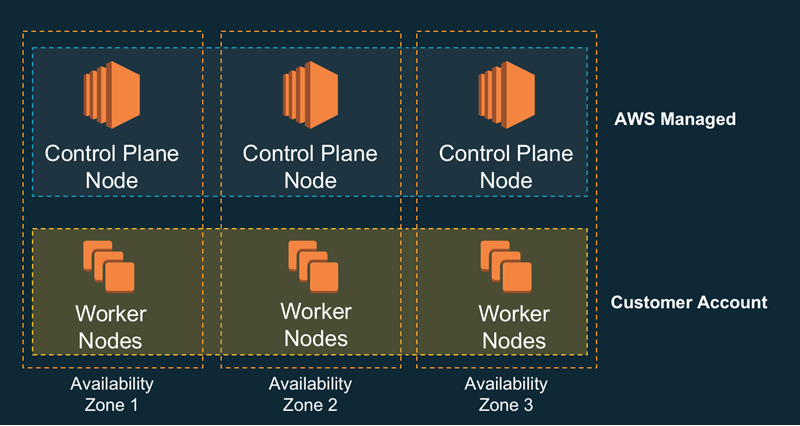Yesterday, Amazon Web Services
announced the full launch of its cloud service based on Kubernetes -
EKS (Amazon Elastic Container Service for Kubernetes). It
was first
announced in November last year (shortly after AWS
joined the CNCF foundation behind Kubernetes), but then it had pre-access status. What is behind the ex?
Amazon EKS is Kubernetes ready for use, deployed and managed in AWS cloud environments. You can talk about EKS as a
managed service (or hosted service). This market (for Kubernetes) is quite new, but it is already much wider than the well-known Google Kubernetes Engine (GKE) and Azure Kubernetes Service (AKS), because It has at least more than a dozen
officially-documented offers from large and not very IT companies (including Red Hat, IBM, Oracle, Pivotal, etc.).
Like last time, Amazon announced with special pride that (according to
CNCF official statistics ) “AWS is the leading environment for Kubernetes,” since
57% of companies using Kubernetes
place their clusters in the Amazon cloud . This data is the result of a survey of more than 550 representatives of the Kubernetes community who attended the KubeCon + CloudNativeCon North America conference (in December 2017). Similar numbers at CNCF are regularly received at their major events, and the percentage of AWS is growing steadily. It is only necessary to clarify that this percentage is the result of multiple sampling (that is, the same K8s users for the most part work simultaneously with other platforms).
The key features in EKS, as one would expect, are related to integration with other AWS cloud services / capabilities. Here is a list of them:
- Multi-AZ - high availability of the Kubernetes control plane (more precisely, kube-apiserver and etcd), which is actually hosted, i.e. placed on AWS facilities and serviced automatically: the nodes themselves are replaced in the event of a crash, and also automatically patched / updated. Accessibility is achieved thanks to the distribution of the control plane in three Availability Zones in AWS.
- Using Heptio Authenticator for authentication, which integrates with AWS Identity and Access Management (i.e., you can use roles from IAM).
- Multiple load balancing support for traffic routing: AWS Network Load Balancer, AWS Application Load Balancer, Elastic Load Balancer.
- Use Amazon Elastic Block Store (EBS) volumes to store data in Kubernetes (PersistentVolumes).
- The ability to use DNS records from Route 53 for services hosted in Kubernetes clusters.
- Autoscale support - AWS Auto Scaling.
- CNI plugin for using Elastic Network Interfaces network interfaces in clusters.
Among other EKS integrations with AWS services, support for AWS PrivateLink and AWS CloudTrail (for logs) can be noted.
The
project's FAQ states that the service has launched “the latest version of the Open Source version of Kubernetes, thanks to which you can use all existing plugins and tools from the Kubernetes community”. In another question, it is clarified that currently only
version Kubernetes 1.10 is supported.
In the simplest detail, the authors so represent the architecture of the EKS:

And so - the algorithm for using EKS:

How to still try EKS in action, you can see from the
Amazon EKS announcement , which provides step-by-step instructions (with screenshots) for creating Kubernetes cluster, as well as in the AWS documentation - a 30-minute tutorial “
Deploy a Kubernetes Application ” was prepared there.
Amazon EKS is currently available
only for US regions of US East (N. Virginia) and US West (Oregon), and its distribution to others is expected "very soon", although this service is not available in
the services table by region .
Finally, Amazon claims to make changes to the upstream codebase of Kubernetes itself and related projects (including the mentioned Heptio Authenticator, as well as the Virtual Kubelet). However, in this case, the
statistics are clearly not on their side: among any significant leaders in the number of commits to the Kubernetes code base, there is no company. On the other hand, this fact alone allows you to calmly respond to predictions about the future of Kubernetes
like this .